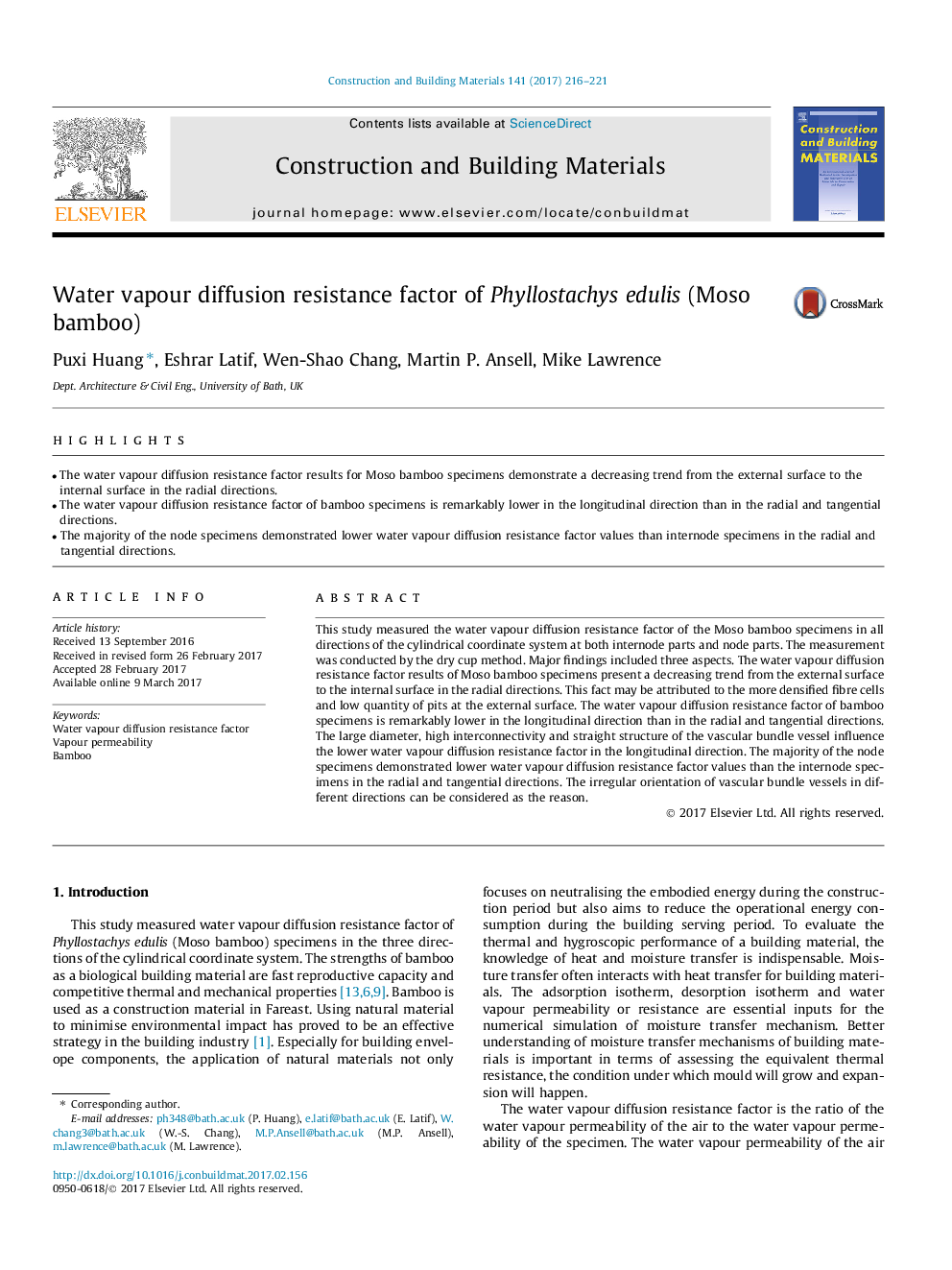| Article ID | Journal | Published Year | Pages | File Type |
|---|---|---|---|---|
| 4913378 | Construction and Building Materials | 2017 | 6 Pages |
Abstract
This study measured the water vapour diffusion resistance factor of the Moso bamboo specimens in all directions of the cylindrical coordinate system at both internode parts and node parts. The measurement was conducted by the dry cup method. Major findings included three aspects. The water vapour diffusion resistance factor results of Moso bamboo specimens present a decreasing trend from the external surface to the internal surface in the radial directions. This fact may be attributed to the more densified fibre cells and low quantity of pits at the external surface. The water vapour diffusion resistance factor of bamboo specimens is remarkably lower in the longitudinal direction than in the radial and tangential directions. The large diameter, high interconnectivity and straight structure of the vascular bundle vessel influence the lower water vapour diffusion resistance factor in the longitudinal direction. The majority of the node specimens demonstrated lower water vapour diffusion resistance factor values than the internode specimens in the radial and tangential directions. The irregular orientation of vascular bundle vessels in different directions can be considered as the reason.
Keywords
Related Topics
Physical Sciences and Engineering
Engineering
Civil and Structural Engineering
Authors
Puxi Huang, Eshrar Latif, Wen-Shao Chang, Martin P. Ansell, Mike Lawrence,
